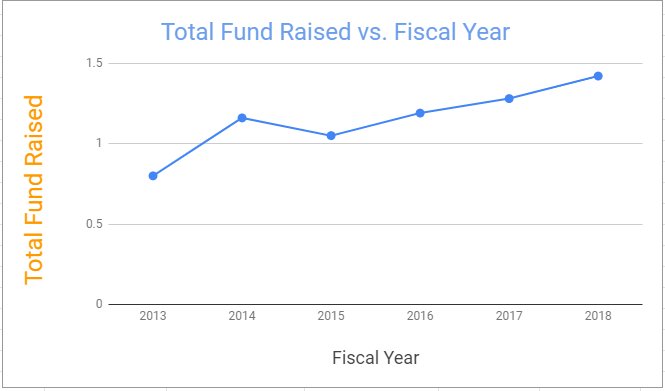While fundraising itself is a challenging task, fundraising specifically for education is even more demanding. For schools, fundraising is moderately easy but when it comes to higher education (colleges and universities) the task is difficult. And that is because of the complexity of projects, activities and core functionalities of the institutions. In this article we will talk about the major challenges facing fundraising in higher education and how to knock them down.
Why higher education institutions require funds?
- Research purposes:- Research plays a vital role in higher studies. They are carried out not only to gain knowledge or for valuable insights into the subject but also as a quest to develop cutting edge technologies or to find a cure. These researches are often resource-intensive and are therefore, costly. A large chunk of available funds is always channelled for conducting research by the institutions.
- For events:- Any sort of exhibition, competition, guest lectures, and other events.
- Upgrading facilities:- Latest technology and facilities are crucial for academic activities as well as the overall functioning of institutions. You need funds to upgrade and restore facilities.
- For supporting students:- To provide low-cost accommodation and scholarships for talented students who cannot afford or support disabled students it.
Private institutions, from the big ones (for example, Harvard University) to the smaller ones, survive on funds. Harvard raised a whopping $1.42 million in the fiscal year 2018. This came as a 10 percent growth in the overall funds raised in the fiscal year 2017. The graph below shows the funds raised by Harvard University from 2013 through 2018.

For Harvard, being a huge name, funds come without much struggle. But for others, there is a need to pump in some extra efforts to raise funds efficiently. Let us analyse the key challenges facing higher education and then how to tackle them.
The three key challenges
From limited resources, dependency upon traditional revenue sources to donor’s shifting behaviour – fundraisers are facing a lot of problems. But thee BIG three challenges are:
- The competition for donors is growing like never before. Today, in the US, there are 1.5 million charities. To add to that, there is an increase in research-driven institutions who are fiercely competing for funds.
- A paradigm shift in communication and donation methods. A US adult spends an average of 24 hours a week on the mobile device. In 2000, the time spent by an American on mobile was 9.4 hours a week. Today, there are more than 800 social media channels. By the end of 2019, 246 billion emails will be sent per day. More and more businesses are using social media to grow their customers network. The implication is clear. Communication touch-points with donors are increasing. In this digital world, people choose what they want to read and with whom they want to connect. Even if they are not actively seeking out information, they are bombarded with a lot of it. It is you that is fighting for their attention.
- There is a significant drop in alumni participation in fundraising. According to a report by EAB, a best practices firm that research and address challenges in the education sector, although the funds are seeing an increase the alumni donors are declining.
Knock down the challenges with a compelling fundraising strategy
Beneath the challenges, there is an incredible opportunity hidden that can be unearthed with a compelling fundraising plan. Now that we understand what’s ahead of us, let’s create an effective plan to tackle the problems:-
Prepare yourself:- You are well versed with the functioning of your institute. Keeping that in mind, define clearly your strategy – right from the mission and goals to the channelling of funds. Profile your donors and prepare some talking points. Personalize your message according to your donor preference. Donors want to know how you are using the collected funds. Share some details with them and you will definitely see some positive outcomes.
Devise a strategy:- A well researched and planned strategy will truly revolutionize your efforts. Start with answering the following questions:
- How much fund do you need to raise and why?
- From whom you want to raise donations?
- How would you want to allocate the funds?
Leverage the technology:- Organization need a modern, digital approach to sustain today. It scales up their target reach. But there is a need to fine-tune our approach. Choose the right communication channels whether it is social media platform, emails, digital advertising and marketing platforms. Rather than broadcasting the same message across all the channels, focus on tailor-made approach so that you create a unique identity.
Strengthen your alumni relations:- You can reap more benefits from your alumni engagement than what your non-alumni supporters can provide. Alumni support enables to expand the supporter’s base since they have the first-hand experience of the strengths, student’s experiences, programs, and functions of the university.
Involve the top management of your institution:- Keep the higher management of the university in the picture while you design your strategy, while you start with your fundraising campaign and if possible throughout the entire drive. Because of their expert knowledge in the field and leadership qualities, their involvement in the operations will throw a positive impact.
The added benefits of fundraising for higher education
Fundraising not only helps you raise money it also brings you certain other benefits. By asking for funds from individuals and organizations you are introducing your university to a potential pool of donors. Hence your are creating awareness about your education structure and its mission. It will help you build your networks and connections with people who may contribute to the wellbeing of your institution. You may even come across people who might be willing to play non-executive roles for your university and college. This will play a role in boosting the overall morale of the institution.
Summarizing, with the right fundraising strategies in place you can make this year the one in which alumni giving and donations increase for your institution. Do not forget to personalize your alumni communications and target different alumni groups based on age and interests. Establish a donor retention program to increase your number of recurring donors. And finally, remember that online giving is increasing, so make sure you make it easy for alumni and friends to give online.
For more information, reach out to us at support.
fundraising campaign fundraising plan Fundraising strategy higher education fundraising raise funds school fundraising
Last modified: April 25, 2025

















